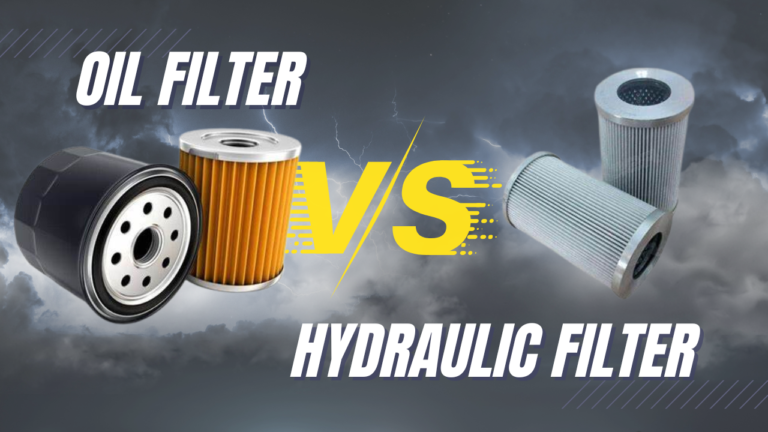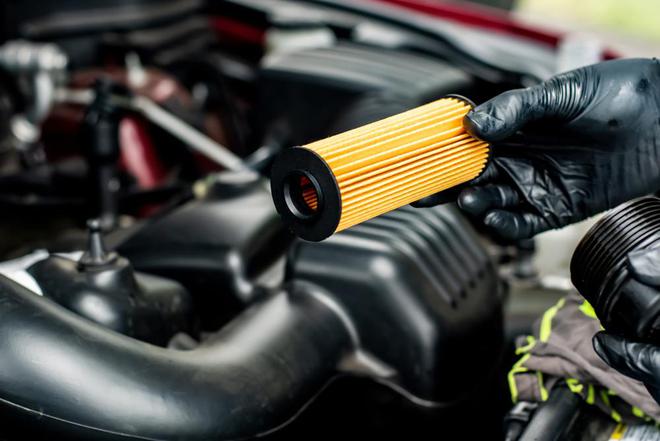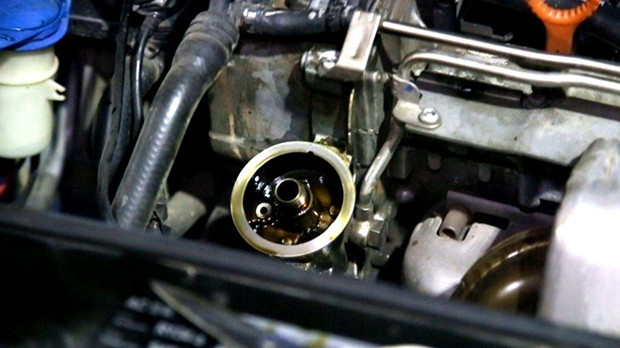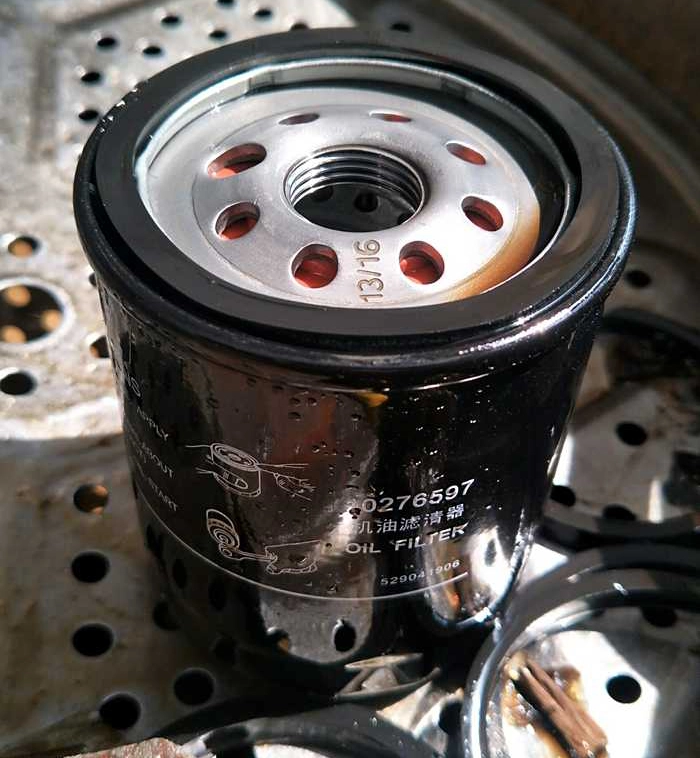Changing Car Engine Oil Filter: A Comprehensive Guide
The automotive oil filter is an essential component of the engine lubrication system, primarily serving to filter out impurities, metal shavings, sludge, and water from the engine oil, ensuring that the oil delivered to all lubricated parts is clean and free of contaminants. Replacing car oil filter is a crucial task in car maintenance, playing a significant role in protecting the engine and extending its service life.
The following article provides a comprehensive guide on changing the engine oil filter, aiming to help car owners better protect and maintain their vehicles.
Determining When to Replace the Oil Filter

Observing the car engine oil: When the engine oil turns black and becomes viscous, it may indicate that the engine oil filter is saturated and can no longer effectively filter impurities. When changing car engine oil, you can use an oil filter opener to check the cleanliness of the old oil and assess whether an immediate oil filter replacement is necessary.
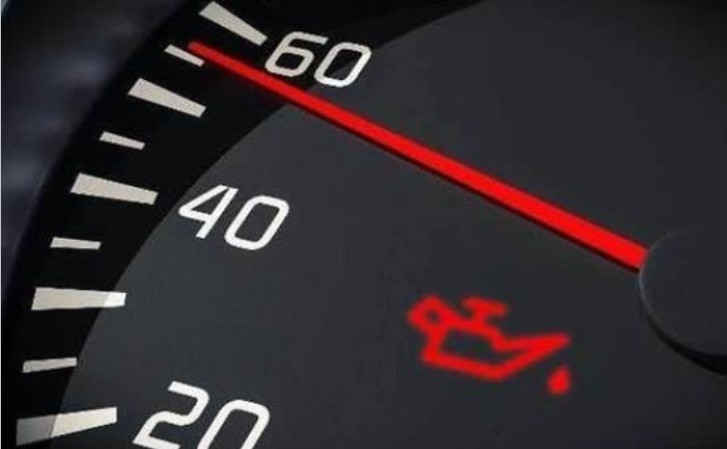
Checking engine oil pressure: If there is an abnormal drop in engine oil pressure, it may be due to the engine oil filter car being clogged, preventing the engine oil from flowing smoothly back into the engine. Most vehicles have an oil pressure warning light on the dashboard, which should be checked immediately if it lights up.

Checking engine oil level: A low car engine oil level may indicate a leak, with the car oil filter housing being a common source of leaks. After topping up the engine oil, if the level drops again, it may be necessary to replace the car oil filter.

Listening to engine sounds: If abnormal noises such as knocking or grinding are heard when the engine is running, it may be because the engine oil filter failed to provide sufficient clean engine oil, leading to insufficient lubrication of the internal engine components.
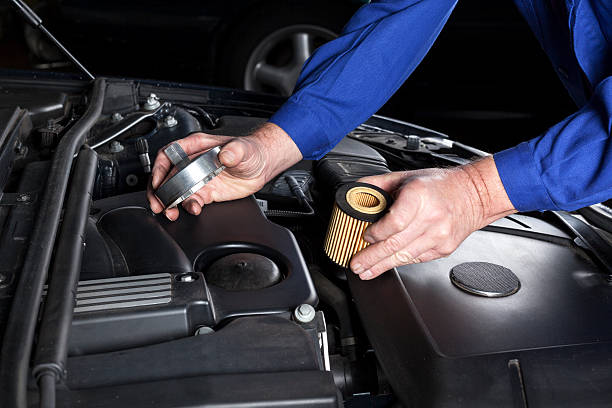
Regular inspection:Upon each engine oil change, it is imperative to conduct a thorough inspection of the automotive oil filter. This includes examining the oil filter housing for any signs of oil leakage or structural damage and assessing the cleanliness of the filter element itself. If the filter is found to be soiled or compromised in any way, it is essential to replace it without delay to ensure optimal engine performance and prevent potential damage.
Engine Oil Filter Replacement Timing
It is generally recommended to replace the engine oil filter when changing the engine oil. Different situations can refer to the following suggestions:
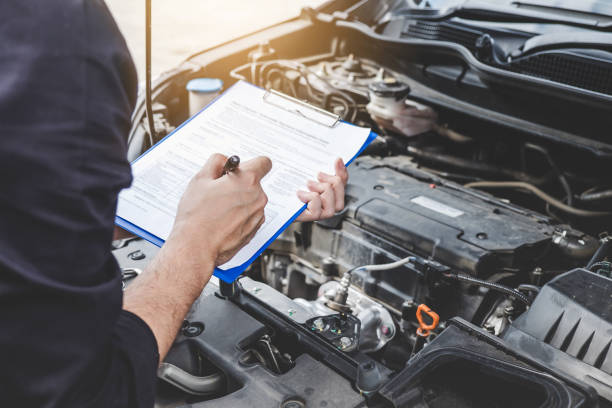
Under normal usage conditions: Follow the recommendations in the car’s maintenance manual, usually replacing the oil filter every 5,000 to 10,000 kilometers. This replacement interval ensures effective filtration of the engine oil while avoiding unnecessary frequent replacements, thus reducing waste.
Different engine oil conditions:

Use of high-quality engine oil: When using high-quality engine oils such as semi-synthetic or fully synthetic, and mainly driving on smooth roads such as suburban or highway areas, the oil filter replacement cycle can be extended to about 30,000 kilometers. This is because high-quality engine oil provides better lubrication and cleaning performance, reducing the generation of impurities, and thus extending the service life of the filter.
Use of poor-quality engine oil: If poor-quality engine oil is accidentally added, due to its possible higher content of impurities, it is recommended to change the engine oil and filter after driving 3,000 to 5,000 kilometers, or immediately based on the actual condition of the oil. This can reduce engine wear and maintain engine performance.

Aggressive driving habits: For those with aggressive driving habits, such as frequent rapid acceleration and hard braking, especially in congested road conditions, it is recommended to change the engine oil and filter every three months or so, even if the mileage is insufficient. Aggressive driving increases engine wear, so more frequent filter changes help maintain the engine’s good working condition.

Vehicles not in use for a long time: Even if the vehicle has not reached the recommended mileage or is parked for a long time, it is recommended to change the filter every three to six months. This is because long-term storage may cause the filter material to age, affecting its filtration effectiveness.
Engine Oil Filter Replacement Steps

- Prepare Tools and New Engine Oil Filter:Gather necessary tools including an oil filter wrench, an oil pan wrench (typically 17mm), gloves, a waste oil basin, and a new oil filter that is compatible with your vehicle model. Consult the vehicle manual or use the vehicle identification number (VIN) to find the appropriate filter online.
- Lift the Vehicle:Park the vehicle on a flat, solid surface, ensuring it is off and the handbrake is engaged. Find the jack points on the undercarriage and lift the vehicle until there is sufficient space to access the oil pan and filter.
- Drain the Old Oil:Locate the oil drain plug, usually at the bottom of the oil pan, and place a waste oil basin underneath. Loosen the plug with the oil filter wrench to drain the oil. Retighten the plug carefully and dispose of the used oil according to local regulations.
- Remove the Old Oil Filter:Find the engine oil filter, typically on the side or bottom of the engine. Use the oil filter wrench to unscrew and remove the filter, being cautious not to damage it.
- Observe the Direction of the New Car Oil Filter:Check the threads on the new oil filter to determine the correct installation direction. Many oil filters have an arrow indicating the flow direction, which should point toward the engine.
- Install the New Oil Filter:Apply a new engine oil layer to the new filter’s sealing ring. Screw in the new oil filter in the correct direction, tightening it by hand first, then using the wrench for an additional 3/4 to 1 turn without overtightening.
- Check and Add New Engine Oil:Lower the vehicle and locate the engine oil filler cap. Add the appropriate amount of new engine oil, checking the level with the dipstick and ensuring it does not exceed the maximum mark.
- Start the Engine and Check:Close the oil filler cap, start the engine for 2 minutes, then turn it off and wait a few minutes. Check for leaks at the oil filter and drain plug, and recheck the oil level with the dipstick.
Oil Filter Replacement Precautions
Selection and Preparation:
- Choose the Right Filter: Select a high-quality oil filter that is compatible with your vehicle model.
- Pre-Oil the Filter: Add some new engine oil to the new filter before installation to ensure immediate oil pressure when the engine starts.
- Vehicle Preparation: Park the vehicle on a level surface and ensure the engine is off and has cooled down to allow engine oil to flow back.

Tools and Operations:
- Use the Right Tools: Employ a dedicated oil filter wrench to prevent damage.
- Drain Old Engine Oil: Thoroughly drain the old engine oil to prevent contamination of the new filter.
- Install the New Oil Filter: Apply new engine oil to the sealing ring of the new filter and tighten it in a clockwise direction, being mindful of the force used.

Safety and Inspection:
- Check for Oil Leaks: After starting the engine, inspect for any oil leaks and confirm the oil level is correct.
- Safety Precautions: Exercise caution to avoid burns and fire hazards during the operation.
- Check Filter Direction: If the oil filter has an arrow indicating the inlet and outlet, ensure it is installed correctly.

Environmental Protection and Maintenance:
- Dispose of Old Oil Properly: Collect and dispose of used engine oil responsibly to prevent environmental contamination.
- Maintain a Clean Environment: Keep the operating area clean to prevent dust and impurities from entering the engine.
- Use a New Sealing Ring: Replace the oil filter sealing ring with a new one if possible to ensure a proper seal.

Records and Compliance:
- Follow Maintenance Manual: Replace the car oil filter as recommended by the vehicle’s maintenance manual.
- Record Replacement Cycle: Keep a record of the date and mileage for each oil filter replacement to track the maintenance cycle.
Following the aforementioned recommendations ensures that the process of replacing the engine oil filter is both safe and effective, thereby helping to maintain the performance of the engine and extend its service life. Regularly replacing the oil filter not only prevents impurities from entering the engine and reduces wear, but it also improves fuel efficiency and reduces emissions, thus having a positive impact on the environment.



